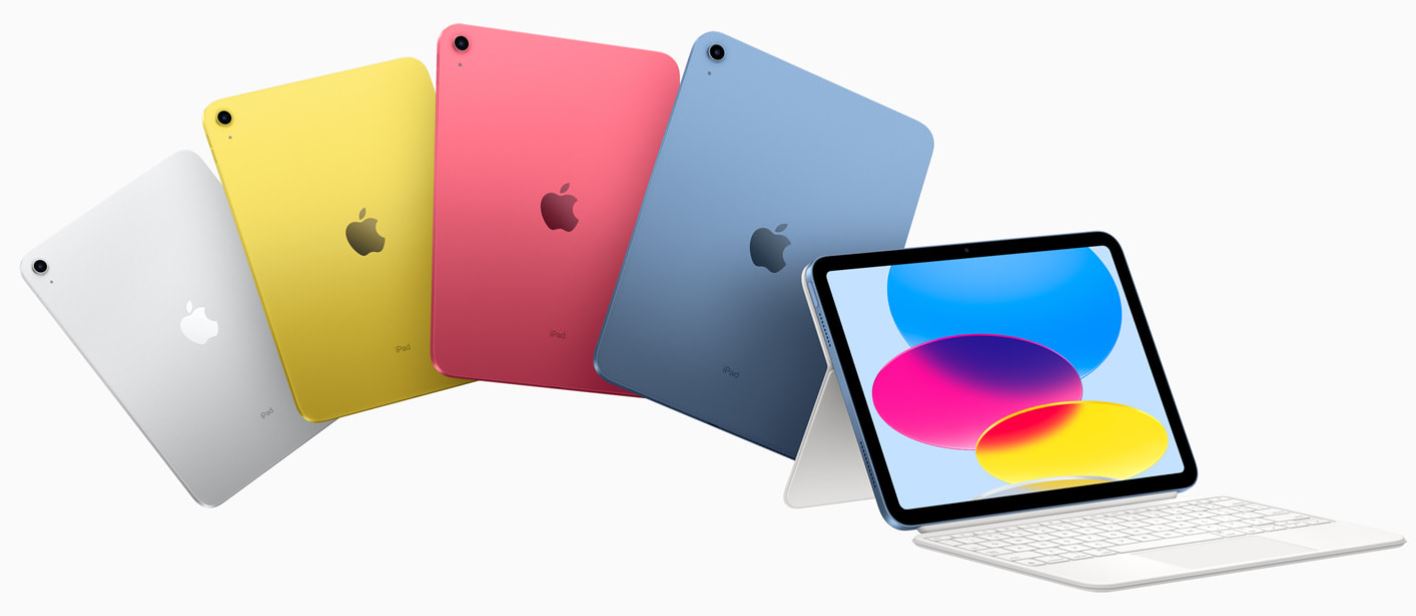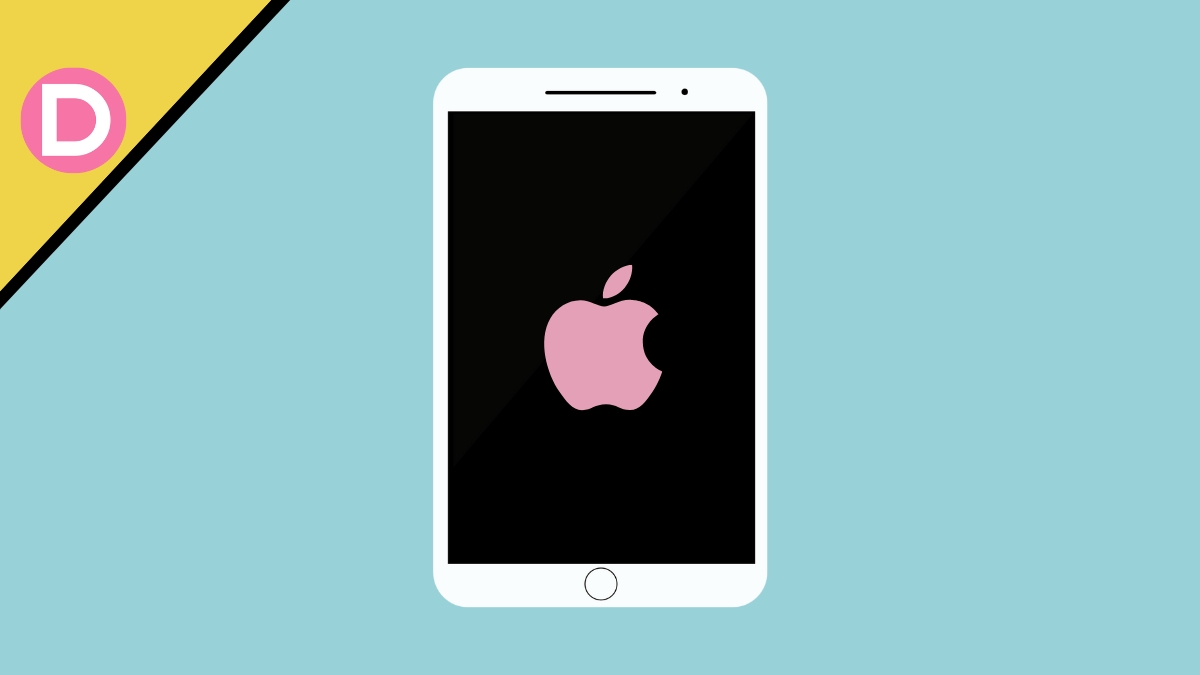There has never been a more confusing time to buy an iPad. Apple made a bunch of chaotic releases in 2022 that completely puzzled the media, with each step making the already confusing lineup more and more unorganized. It isn’t clear which iPad someone should buy anymore, and the value proportion of the baseline iPad model severely deteriorated, too.
The iPad Air got the M1 chip early this year, indicating we’d see new iPad Pros. Then, the iPad Gen 10 later this year consisted of a decent set of upgrades. The chip got a boost to the A14 Bionic, and the lightning port was swapped for USB Type C, though it’s still restricted to USB C 2.0, an old and slow standard. The front got a new design with slimmer bezels, but it remained non-laminated, with no reflective coating or HDR support.
Unclear choices were made, like swapping the port to USB C but still letting the device support only the first-generation Apple Pencil. This unjustifiable decision meant purchasing a separate dongle to charge the Apple Pencil. To make matters worse, there was a price bump to 449$, bringing the price closer to the M1 iPad Air.
The iPad Pro lineup stays the same as last year, with just a chip bump to the M2 and a new Apple Pencil hover feature that could have easily been added to the previous year’s models. iPadOS remains restrictive, making all that power superfluous.
While the base iPad got a new keyboard with function rows to go with it and also a landscape orientation for the front camera, the Pro models got no such improvements. An effort was made to offer iPads at multiple price points, but the entire iPad experience remained the same. The core differences you will see are all artificial software limitations.

iPad 2023 Specifications: What we want to see
Moving into 2023, here are five changes we’d like to see made to the iPad 11th Generation. Ultimately, we’ll elaborate on rumors about a new 14-inch iPad that might be added to the portfolio.
1: Clear differentiation
Currently sitting at 449$, the base models could use more upgrades, like a laminated display with wider color space, better brightness, and better viewing angles. They could also use support for Apple Pencil 2. Starting to sound like the iPad Air, right? If the base model got all that for 449$, who on Earth would get the Air for 599$?
Even now, the M1 iPad Air is priced slightly more than the iPad 10th Gen, which has worse performance, a much worse screen, and support for only the first-generation Apple Pencil. There’s also the iPad Mini sitting at 499$, which is slightly more expensive than the base model and shares the A14 chip.
Someone looking for a value iPad should probably get the 9th Gen iPad. But if they’re willing to spend over 400$, it’s all just chaos. Instead of the M2 iPad Pro, you can get an M1 iPad Pro for around 200$ less, and they fundamentally offer the same experience.
Instead of the base iPad, you can get the iPad Air, and the people who want a value iPad already have the 9th generation model, which didn’t even get a drop in price after its successor launched. The lineup looks like an unstable pricing ladder to convince people to buy the latest top-end model.
Pricing ladders exist to convince you that the most expensive version is the best value by making the value proportion of the cheaper models artificially worse. Even within the Pro lineup, this intentional differentiation exists to make you buy the larger model. That’s the only reason the 11″ model still does not get the better Mini LED screen.
A clear differentiation between models is lost in all this havoc, confusing people. The base model’s price should decrease since 449 for the entry-level model feels like a tough pill to swallow. Streamlining models will surely help the iPad launches for 2023.
2: Better software experience
With the current software inconsistencies and bugs that will hopefully be fixed aside, iPadOS still feels like iOS has enlarged to fit a larger screen. That’s not good enough for a company that advertises iPads as laptop replacements.
We still don’t have enough Pro apps like FinalCut Pro or Logic Pro, and there’s no XCode. It’s good enough for a niche of video editors and graphic designers, but other pro consumers will mostly gravitate to laptops instead.
iPadOS still lacks the intuition to function as a replacement for a genuine Desktop OS. While the Stage Manager enables better multitasking, it’s not as good as having multiple floating windows open with the split screen feature running.
There’s still no support for multiple users, and you can barely do anything on the lock screen. We still have no calculator app, and we still don’t get any integration with the Apple Watch.
It might be too much of an ask to expect side-loading capabilities and access to third-party app stores, but that will probably never happen. Finally, the overall software updates could have been better.
The stable version had several stutters when using the Stage Manager, and it was a clunky and buggy mess that deteriorated the battery life, too. Though this was mainly addressed in later updates, it’d be good if more testing was done and the initial launch wasn’t this rough.
3: Battery Life
Apple accomplished impressive feats with battery for their MacBook lineup. The M1 MacBook Air and M2 Air last several hours continuously, often lasting a day and beyond, even with heavy and taxing use. This is made possible with hyper-efficient chips built with software that’s optimized to work well with it.
Beginning with the iPhone 13 series, Apple set the industry standard for battery life, and, incredibly, Apple achieves impressive battery life with smaller battery capacities versus the competition.
Considering this much is possible with optimization and efficient chipsets, it’s weird that the iPads don’t share industry-leading battery life numbers like the iPhones and Macs. A Tablet OS isn’t as heavy as a full-fledged Desktop OS, so if some effort is put in, it’s possible to improve the battery life across the iPad lineup.
4: Camera placement and new accessories
The 10th-generation model got the new landscape camera placement, arguably much better for video calls. It also has a new keyboard with a function row. The iPad Pro didn’t get any of these upgrades. It sticks with the old Magic Keyboard and the old camera placement.
We also hope to see a third-generation Apple Pencil next year that’s hopefully smaller, more precise, and has lower latency. Earlier, there were rumors of MagSafe Charging being added to the iPad, which seems unlikely. An improved keyboard with a bigger trackpad that makes the Pro iPad feel like a laptop replacement would be favorable.
5: Improved screens overall
If the base model screens remain unlaminated to facilitate repairs, they should at least become brighter, and their severe reflectivity must be fixed. The iPad Air deserves at least 90Hz if not 120Hz, but that will probably not happen.
And it’s also about time the base model gets support for the 2nd Generation Apple Pencil, a long overdue change. Moving to Pro iPads, the 11″ model seriously needs the MiniLED technology now, instead of the outdated IPS LCD tech. The 12.9″ model’s MiniLED is alright, but it could do with improvements to blooming, ghost touches, and jelly scrolling.
Jelly scrolling is an issue with many models. When one half of the display refreshes at a noticeably slower rate than the other half, it results in a shaky effect noticeable to many people. Apple has refused to fix this issue before, stating that it’s common with LCD panels.
Many rumors about a 14-inch iPad Pro model, which might feature a Hybrid OLED panel. If that’s true, it’s excellent news for the iPad Pro.
iPad 2023 Rumours
The 14-inch iPad is allegedly coming out in 2023 with slimmer bezels and a horizontal front camera, with either MiniLED or Hybrid OLED. This OLED technology uses thin films to enable better flexibility and rigidity. It makes them less susceptible to crumpling or bending.
Whether this will be split into a regular and Pro model is unclear. The Pro model might get 120Hz and Hybrid OLED, while the non-pro one might stick to MiniLED or LCD, and the refresh rate is unclear.
It’ll mostly get the latest M2 chip and is rumored to have 16GB of RAM and 512GB of Storage. There have been rumors that Apple has been working on a software experience that takes iPadOS closer to macOS, with a full-size operational dock and better multitasking. It hopefully shows up with the 14-inch models.
iPad 2023 Release Prediction
- The iPad 2023 will likely be released in March 2023 at the Spring event. To recall, in 2022, Apple held its spring event on March 8.
The 14-inch iPad might come out sometime in 2023, possibly in their usual March event. Apple’s event at this time usually focuses on new Macs, new chips, and some other upgrades to their SE lineup. This event is rumored to introduce the M2 Pro and M2 Max chips with new MacBooks.
iPad 2023 Price Prediction
- The upcoming iPad 2023 will likely be priced at $799.
The pricing depends on which route Apple takes with the 11th-generation iPad. If it’s a non-pro model with no 120Hz and no MiniLED/ Hybrid OLED and gets an older chip, it will mostly stay under 800$.
Suppose it gets Pro Motion and new display technology. In that case, it might exceed 1199$, which is incredibly expensive for an iPad, but take all this news right now with a pinch of salt since there aren’t enough credible sources to confirm any of this, and it hasn’t officially been confirmed by Apple either. We will update this article with further info on the 2023 iPad models.
This live article will periodically be updated to cover the latest news.



